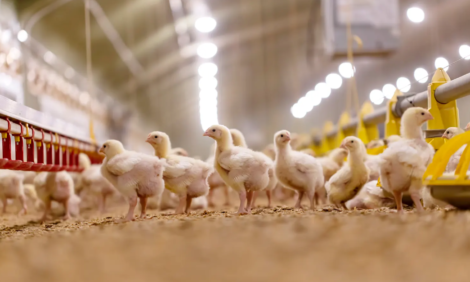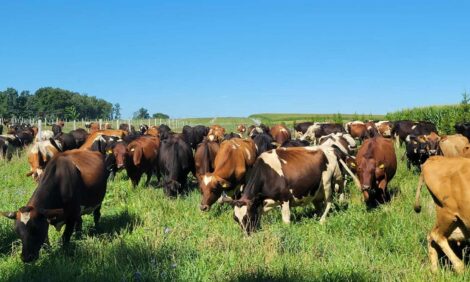



Regeneratively grass-fed beef can be 85% more nutrient dense than conventionally raised beef
Allen Williams sees more and more farmers transition to regenerative grazing worldwide.Part of Series:
< Previous Article in Series
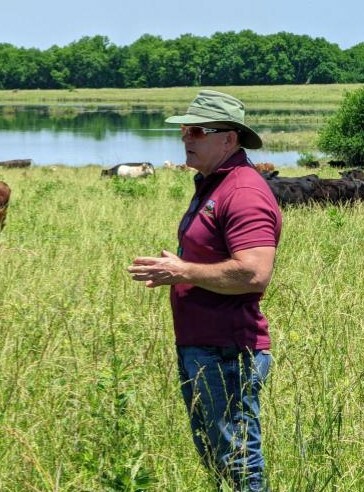
Editor’s note: This is the second article from our interview with Dr. Allen Williams. Click here to read Part 1 – What exactly is regenerative grazing?
The benefits of regenerative grazing are being seen worldwide as agriculture continues shifting towards sustainable farming practices.
Dr. Allen Williams, a 6th generation family farmer and founding partner of the consulting group Understanding Ag, offers an explanation of the benefits and barriers of regenerative grazing in the US.
Should producers transition to regenerative grazing?
Williams describes the economic benefits of transitioning to regenerative grazing as significant savings through reduced input costs and maximizing the opportunity to market products at a premium price.
“We are actually putting nature back to work for us rather than working against nature,” he said. “Every single farmer or rancher in the world has four things that are free to them every day – we call those the four ecosystem processes. The energy cycle (sunlight that creates photosynthetic activity), the mineral cycle, the water cycle and community dynamics or biological succession.”
Williams emphasizes that it is up to us to take advantage of nature’s ecosystem processes and optimize their impact on our farms. Thinking about soil health, he explains how utilizing these ecosystem processes can easily turn into economic benefits.
“You build soil organic matter; you build carbon; you build water infiltration, retention capacity and resiliency,” he said. “For example, resiliency allows us to make it through challenging weather conditions.”
By putting nature back to work, farmers can significantly reduce external input costs, reduce reliance on tillage and equipment, and reduce our reliance on fuel, he said.
“We’re also significantly reducing the application of synthetic fertilizers, which can cause a lot of harm to our environment, and we are significantly reducing the amount of pesticides that are applied,” Williams explained.
Farmers and ranchers can reduce and even eliminate reliance on government subsidy through regenerative grazing.
“For instance, my partners and I don’t participate in any of the US Farm Bill subsidy or incentive programs whatsoever. We can farm profitably without any of those subsidies, and we're not only saving ourselves money. We're saving taxpayers money,” Williams said.
Furthermore, premium markets have opened the door to additional potential for profitability.
“We are producing foodstuffs that have a higher value because they were produced regeneratively, and they have higher nutrient density. So, we have the opportunity to capture some added premiums on those products,” he commented.
Next, Williams describes some of the benefits of regenerative grazing for the cattle and consumers.
“Dr. Fred Provenza and his colleagues have done more than 40 years’ worth of research looking at the benefits of a more varied diet on the health of livestock,” he said. “What they have found very definitively is that the more varied the diet, the healthier they are and the better they perform. It increases their performance whether we're talking about gain performance, reproductive status or health. They have far less mortality and morbidity. It even positively affects their epigenetics.”
Williams reinforces that health in animals is also a huge economic factor.
“If we can improve the health with a more diverse and better environment for them to graze in, we have significantly lowered all the cost from antibiotics and many other pharmaceuticals,” he explained.
As less antibiotics, chemical dewormers, fly control, and other pharmaceuticals are used in the field, it lowers the impact to the environment, ecosystem and water systems for human consumption.
“What we have found through the work of Dr. Stephan van Vliet and his team of researchers is that livestock raised in a regenerative environment have a far higher ratio of phytonutrients in the meat, milk, etc.,” Williams said.
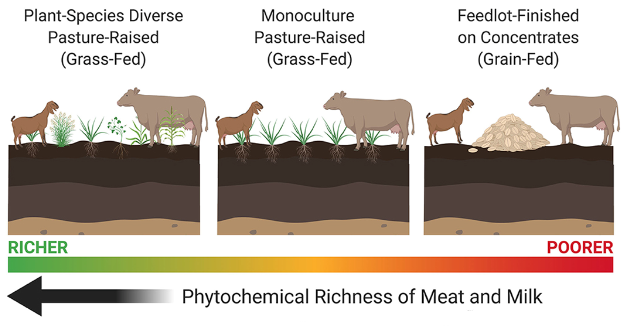
Image source: https://www.frontiersin.org/articles/10.3389/fsufs.2020.555426/full
Improving the phytonutrient content of the foods we eat over time improves our own health.
“What we are discovering from this is that there are dramatic differences in phytonutrient content of the exact same foods depending upon how they were produced and the soils they were produced from,” he stated. “For example, comparing beef from animals raised in a highly diverse pastured environment for their entire life to conventionally raised beef finished in a feedlot, we have found as much as an 85% difference in the phytonutrient density between the two.”
What are the major barriers to transitioning to regenerative grazing?
Williams explains the top three barriers in transitioning to regenerative grazing are education, peer pressure and debt load.
“First is a lack of awareness or the right education. Most farmers and ranchers are not very familiar with regenerative practices and principles – it’s not what they were taught,” Williams explained. “You’ve got to get information from people who have actually done it and can help you realistically implement it.”
He says there are multiple ways to get that education.
“One way is to take time to go visit other farms and ranches that are already implementing regenerative practices,” he said. “Go see what they're doing, learn from them, ask them about their transition, and why they made the transition. What were their key challenges and issues? And how did they overcome those?”
Another way Williams recommends getting informed is to take advantage of educational opportunities, such as the Soil Health Academy.
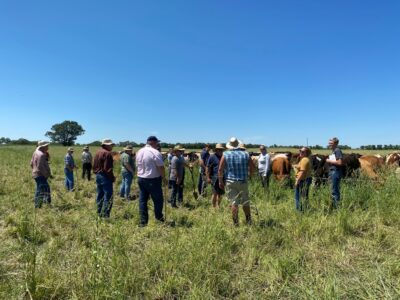
“The Soil Health Academy is a multi-day hands-on practical training program that's always on a host farm actively implementing regenerative agriculture. You can come and learn from people who are actually doing this, people who have been through the trial and error and have been successfully implementing regenerative practices,” he stated.
He adds there are also many podcasts, documentaries, webinars and articles available to help farmers learn more about regenerative agriculture including the Understanding Ag website that Williams works with.
“Second is peer pressure. Family members, friends, neighbors, salespeople and even lenders can apply peer pressure to us. You’ve got to overcome peer pressure, and that’s where a network of support comes in to help farmers,” he said.
Williams emphasizes another strength of the Soil Health Academy is that it allows farmers to interact with other farmers who are also making this transition, forging a new network of support that is critical to success.
“Third is debt load. Debt load in farming and ranching in the US is the highest it’s ever been, and it keeps farmers and ranchers encumbered to the very thing that got them in debt to begin with,” he explained. “We work with farmers and ranchers to help them overcome all three of those barriers. Once you help them overcome them, their willingness to transition and the pace at which they transition increases dramatically.”
Williams has been seeing significant growth in regenerative grazing, yet he understands there is a long way to go before there is significant implementation.
“We're working in all 50 US states and in 40 different countries. We're working across 32 million acres that are under regenerative transition,” he stated. “Even as rapidly as it has grown, we still have less than 5% of all farmers and ranchers implementing regenerative practices and principles as there's 890+ million agronomic acres in the US,” Williams concluded.









